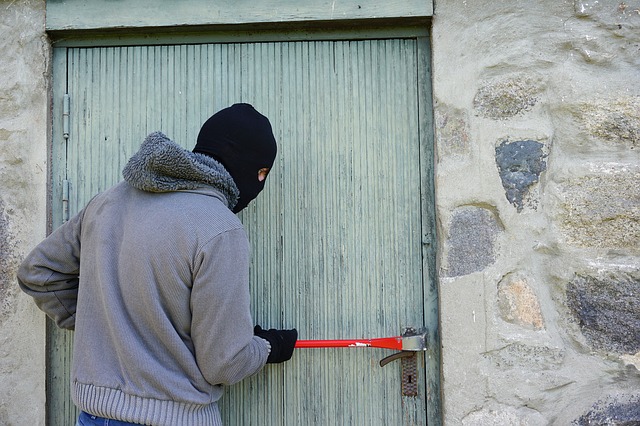
Preventing Theft from Job Sites
Although it is important for companies to trust their workers and the general public, the unfortunate reality is that theft can happen at any time. This is particularly true in the construction industry, where expensive tools and machinery are often left in plain sight or are easily accessible to criminals.
Construction site theft is especially damaging, as the theft of materials and tools can quickly delay a project, sometimes bringing production to a halt. Accordingly, it is essential for construction companies to understand how they can prevent job site theft before it happens.
General Tips
While every job site presents its own set of unique challenges, there are a number of general tips firms can use to better secure a construction site. The following are some basic strategies you can use to protect your materials and tools from thieves:
- Create a written security policy and job site security plan. These written plans should assign supervisory responsibilities, encourage awareness, and establish basic best practices for securing tools and materials.
- Contact nearby property owners and local law enforcement officials whenever you start a new project. These parties can help monitor your job site, particularly during off-hours.
- Establish a way for your employees to report theft or suspicious activity. Be sure to maintain complete records of any security incidents, as they can be beneficial to law enforcement in the event of theft, vandalism or similar occurrences.
- Conduct thorough background checks on your employees before hiring them on full time. You should also keep a list of people authorized to be on the job site on hand at all times.
Worksite Protections
Equipping your worksite with theft prevention features is mandatory if you expect to ward off potential criminals. Whenever possible, consider doing the following:
- Enclose your worksite with a security fence and provide limited access at all times. Use lockable gates whenever possible. Avoid using low-quality locks or leaving keys in the locks themselves.
- Ensure that your worksite is well-lit at night to deter criminals.
- Utilize signage to keep unauthorized personnel off your worksite.
- Walk around the worksite at the beginning and end of each day to ensure that no items are missing.
- Consider hiring security guards to patrol the construction site, particularly at night.
If possible, install security cameras to safeguard your job site. Overall, training employees on how to best keep materials and equipment out of the hands of thieves is your first line of defense against losses.
Controls for Equipment, Tools and Materials
The number of tools and machinery found on a construction site can vary heavily from day to day, making it difficult to keep track of valuables. That’s why the first step in any good protection program is to inventory the equipment you have.
An inventory should be made available for each job site and should accomplish the following:
- Inventories should track all newly purchased items. Copies of the inventory should be kept in a secure location.
- Inventories should be up to date and include photos of the larger, more important equipment.
- To aid in the settlement and recovery of any stolen equipment, inventories should include the following:
- The original date of purchase
- The original cost of the equipment
- The equipment’s age and serial number
- Relevant manufacturer information
Firms should assign one employee to be in charge of managing the inventory. This person would be responsible for keeping track of all materials, tools and deliveries.
Other major steps to securing equipment, tools and materials include the following:
- Utilize a secured area to store your equipment.
- Mark and label all tools in a distinctive manner for easy identification.
- Implement a checkout system of all tools and equipment so you can track their whereabouts.
- Establish a key control system for heavy duty machinery.
- Install anti-theft devices on mobile equipment.
- Lock all oil and gas tank caps.
- Park all equipment in a centralized, well-lit and secure area.
- Avoid using your worksite for storage. Remove any tools, materials or equipment that are not in use.
In general, it’s important to keep inventory levels low on-site to discourage thieves. In addition, creating and maintaining an equipment program can make all the difference when it comes to safeguarding your tools.
Equipment programs should make employees, managers, supervisors and foremen responsible for equipment losses. Under such programs, all losses are must be reported, regardless of how small. You should review equipment programs at least annually.
Responding to Job Site Theft
Even if an unimportant or inexpensive piece of equipment goes missing, it’s critical to report the theft to the police. While the authorities may not always be able to recover stolen items, reporting every instance of theft helps police establish a pattern that may assist in future cases.
When a theft occurs, respond by doing the following:
- Notify the proper authorities. Provide as much detail as possible, including when the theft took place and what was stolen.
- Contact your insurance broker and review the specifics of your policies, including coverages, limitations and deductibles related to personal property.
- File an insurance claim.
Following a theft, it’s important to take any additional steps necessary to secure your job site to prevent future losses.
Protect Your Projects
Theft is unpredictable, but there are many workplace controls that firms can implement in order to protect themselves. In addition, it’s important to speak to a broker to seek the appropriate insurance coverages. Contact Scurich Insurance today for more information.

Comments
Not found any comments yet.